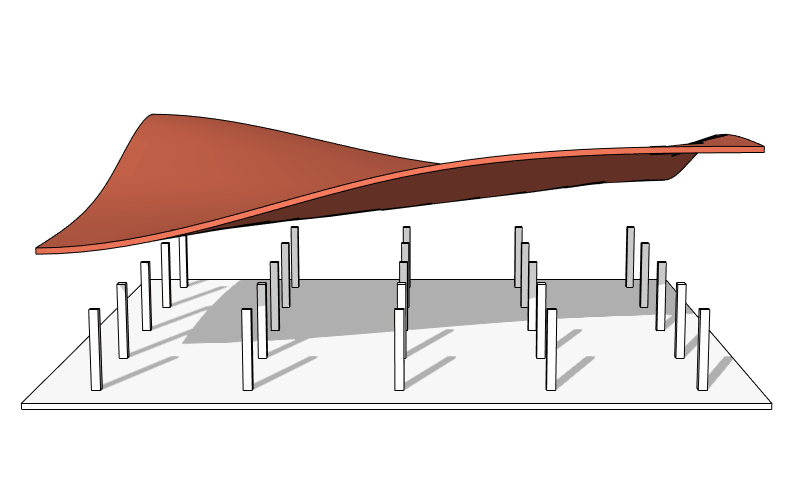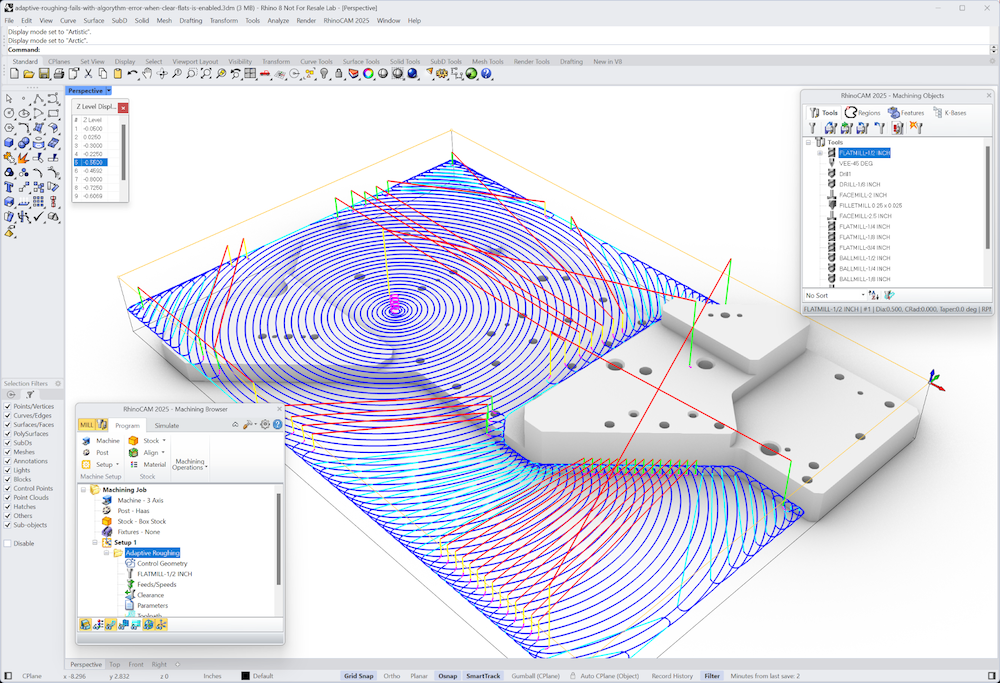Your Cart is Empty
Customer Testimonials
-
"Great customer service. The folks at Novedge were super helpful in navigating a somewhat complicated order including software upgrades and serial numbers in various stages of inactivity. They were friendly and helpful throughout the process.."
Ruben Ruckmark
"Quick & very helpful. We have been using Novedge for years and are very happy with their quick service when we need to make a purchase and excellent support resolving any issues."
Will Woodson
"Scott is the best. He reminds me about subscriptions dates, guides me in the correct direction for updates. He always responds promptly to me. He is literally the reason I continue to work with Novedge and will do so in the future."
Edward Mchugh
"Calvin Lok is “the man”. After my purchase of Sketchup 2021, he called me and provided step-by-step instructions to ease me through difficulties I was having with the setup of my new software."
Mike Borzage
The Next CAD Revolution Starts Today
April 23, 2007 3 min read

Parametric modeling, also known as feature based modeling, was brought to the CAD market in the middle of the 80's by PTC with Pro/Engineer. In a time when all 3D modeling was explicit (no parameters, no geometric relationships, no constraints), Pro/E was a revolutionary system. After a few attempts to defend the old non-parametric mode, almost all PTC competitors were forced to update their modeling systems to the new parametric modeling approach. It was a long and painful transition, lasting a decade.
we are witnessing the birth of the next generation of 3D CAD systems
The CAD manufacturers had to learn the new technology and had to invest huge resources to rewrite their obsolete systems almost from scratch. Life was not easier for the end-users, who found themselves dragged into a big technological and organizational shift. Over time users learned a few things about parametric modeling, including:
- it has a steep learning curve
- it is powerful, but complex
- it moves the CAD system from draftsmen directly into designers hands
- it instigates high expectations at the executive level
Twenty years after the appearance of the first CAD parametric systems, the vast popularity of 2D CAD systems seems to be a testimony that not everything went as expected. The new technology was really as powerful as claimed by the marketing departments, but was also very complex to learn and use, and didn’t always provided the flexibility required by the dynamics of the design process. I expressed my opinion on this topic in a previous post: Frederick W. Taylor and 3D Technology.
We are still in the middle of this very slow transition between 2D and 3D. Some CAD companies are now realizing that 3D design could be popularized and widely adopted by lowering the economic threshold and significantly simplifying the user interaction. They are trying to offer the benefits of parametric modeling without its disadvantages. Three of these innovative companies include:
- Alibre
- Greg Milliken, CEO of Alibre, in his recent interview, explained that he believes in making parametric systems easier to use, more affordable, more data agnostic, and more collaborative (powered by collaboration tools). A short video presentation from Alibre website could help to understand how Alibre works.
- Kubotek
- Kubotek's new Direct Dimension-Driven Editing rely on smartdimensions as the preferred tools to edit a 3D model. Smart dimensions can be added and removed at any time, and they have no relationship with the way the 3D model has been created. The Kubotek approach works well on simple 3D model, and I'm curious to see how it handles complex models. You can watch a short video on Kubotek website (thanks to Jon Banquer for directing me to the video) to learn more about the new Kubotek approach.
- SpaceClaim
- Michael Payne, a cofounder of SolidWorks, believes that the time has come for a new technological shift in CAD/CAM. He started a new company called SpaceClaim to take advantage of this new opportunity. SpaceClaim's approach is more radical: each face or edge can become a sort of handle in the hand of the user. The intelligence embedded in the CAD system, not in the model, propagates the changes. When the system's guess does not satisfy the user, he can go back and add some constraints until the system generates the desired result. A short video on the SpaceClaim website gives some hints on how the new CAD system works.
The most interesting aspect of the Kubotek and SpaceClaim approaches is that the system "intelligence" and "knowledge" are 100% in the editing algorithms, not in the data structure as in a parametric system. This provides two major benefits:
- The smart editing can be applied to any geometry regardless of the CAD system of origin. This is a huge improvement over systems like Pro/E or SolidWorks where parametric changes can be applied only to native data.
- Given enough time, money, and computer power, the algorithms can be improved and optimized. At each new software release, the systems have the potential to deliver a better value by enhancing their "intelligence."
Today we are witnessing the birth of the next generation of 3D CAD systems, but it is still too early to know who will become the leader. More companies will join this group of innovators and new ideas will appear. Only one thing is sure: in a few years your AutoCAD LT, or equivalent 2D CAD system, will be as obsolete as a slide rule.
Franco Folini
Also in NOVEDGE Blog

Enhance Your Designs with VisualARQ 3: Effortless Geometry Extensions for Walls and Columns
April 30, 2025 8 min read
Read More
MecSoft Unveils RhinoCAM 2025 and VisualCAD/CAM 2025 with Enhanced Features
March 08, 2025 5 min read
Read MoreSubscribe
Sign up to get the latest on sales, new releases and more …



